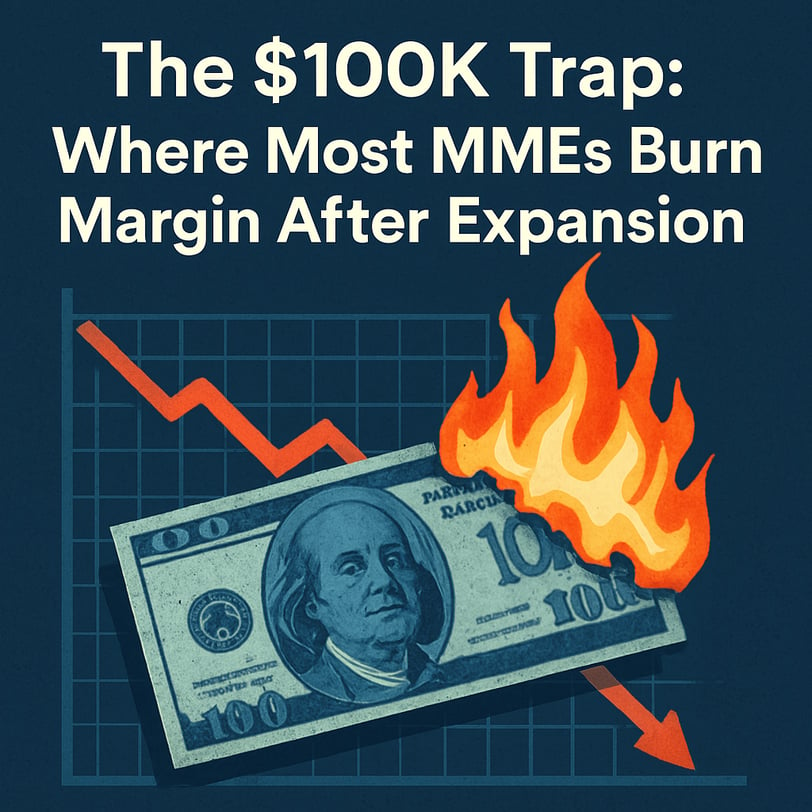The $100K Trap: Where Most MMEs Burn Margin After Expansion
Many MMEs lose up to €100K+ annually after international expansion — not from bad strategy, but from hidden inefficiencies. In this post, we break down the most common margin leaks and show how high-performing MMEs fix them. Actionable insights, no fluff — just boardroom-level thinking.
Harpal Singh
4/6/20252 min read


The $100K Trap: Where Most MMEs Burn Margin After Expansion
Mid-market enterprises are often praised for their operational discipline — but many lose that edge the moment they expand across borders. Not because of flawed strategy, but due to silent, compounding inefficiencies.
At HSE Impex, we’ve observed a consistent pattern across European MMEs: margin leakage after international expansion that quietly drains €80K–€150K per year. The worst part? It’s often not noticed until financial year-end — when it’s too late to act.
Let’s break down where the money actually goes.
Process Dilution — The Hidden Margin Killer
Post-expansion, many MMEs begin to decentralize — sometimes unintentionally. Here’s what we typically see:
ERP processes diverge slightly between markets
Vendor terms are negotiated independently
Local compliance routines develop outside of HQ oversight
Reporting consolidates only quarterly — if at all
This leads to workflow silos, duplicated systems, inconsistent vendor oversight, and ultimately — lost money.
The Real Cost Breakdown
Here’s a conservative snapshot from a German industrial supplier operating in three countries:
InefficiencyAnnual Cost EstimateDuplicate SaaS/tools across units€18,000Missed vendor discount opportunities€27,000Overlapping freight/customs costs€33,000Unhedged FX invoice variance€15,000Internal admin time for reconciliation€12,000Total€105,000+
Now imagine this happening year after year — it’s a silent P&L erosion.
Why This Happens: Structural Blind Spots
Mid-market companies typically don’t:
Track ROI from post-expansion synergies
Assign global process ownership early enough
Integrate vendor and spend oversight into group-level strategy
Analyze cost per €1 of expansion revenue until it’s too late
The assumption is often: “This is just what growth costs.”
But in truth, these are avoidable efficiency leaks, not growth necessities.
What High-Performing MMEs Do Differently
Companies operating at the top of the MME curve tend to:
✅ Centralize spend controls and vendor contracts
✅ Appoint global “process captains” in procurement, freight, and compliance
✅ Use FX-smart banking and spend platforms like Wise, Pleo, or Revolut Business
✅ Standardize SaaS across locations and roll up licensing strategically
✅ Track expansion efficiency metrics (e.g. cost to operate per €1 revenue)
They don’t grow first and clean up later — they scale intelligently, with embedded operating discipline.
What You Can Do This Quarter
You don’t need to overhaul your structure. Start here:
Audit all SaaS and procurement costs across business units
Implement a margin recovery tracker across functions
Consolidate freight, banking, and software vendors where practical
Build a shared capital allocation dashboard with cost visibility by entity
Assign cross-functional leaders to review post-expansion efficiency
Review your FX and cross-border payment setup for leakage
Closing Thought
MMEs don’t fail to scale — they fail to scale profitably.
Your edge isn’t just your product or market — it’s how cleanly and efficiently you execute internationally. At HSE Impex, we’re here to spotlight the real cost centers and the strategic levers that restore margin discipline.
Harpal Singh
Harpal works in corporate development and has experience across industries like tech, manufacturing, and international trade. At HSE Impex, he shares practical insights and ideas to help mid-sized businesses grow smarter, run leaner, and make better decisions as they scale globally.

Connect
HSE ImpEx | Bridging Markets, Building Partnerships
© 2025 HSE IMPEX. All Rights Reserved.
